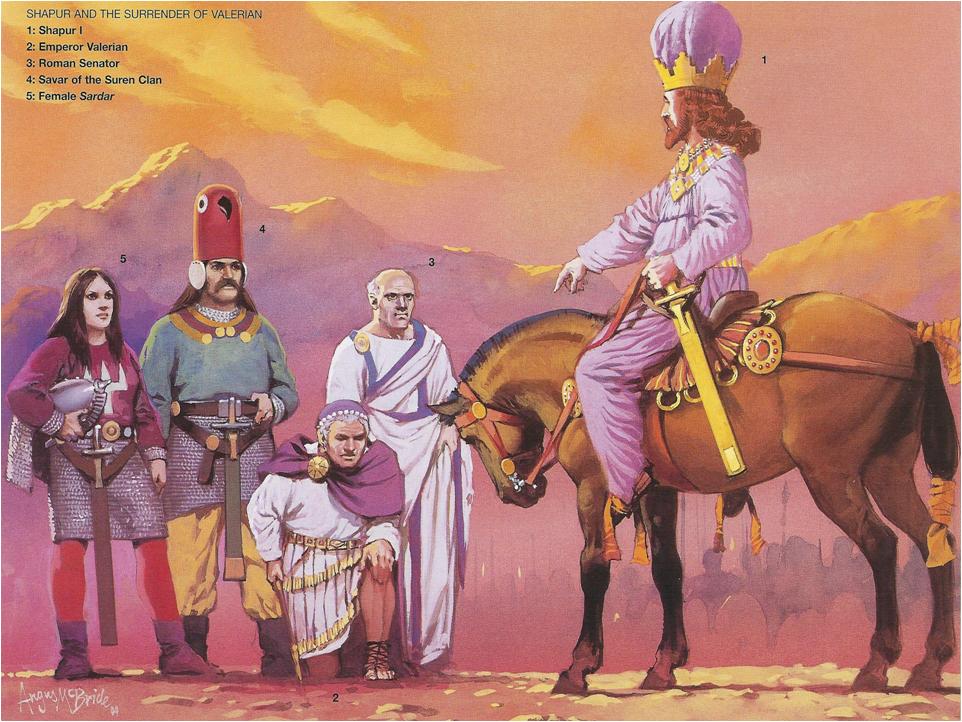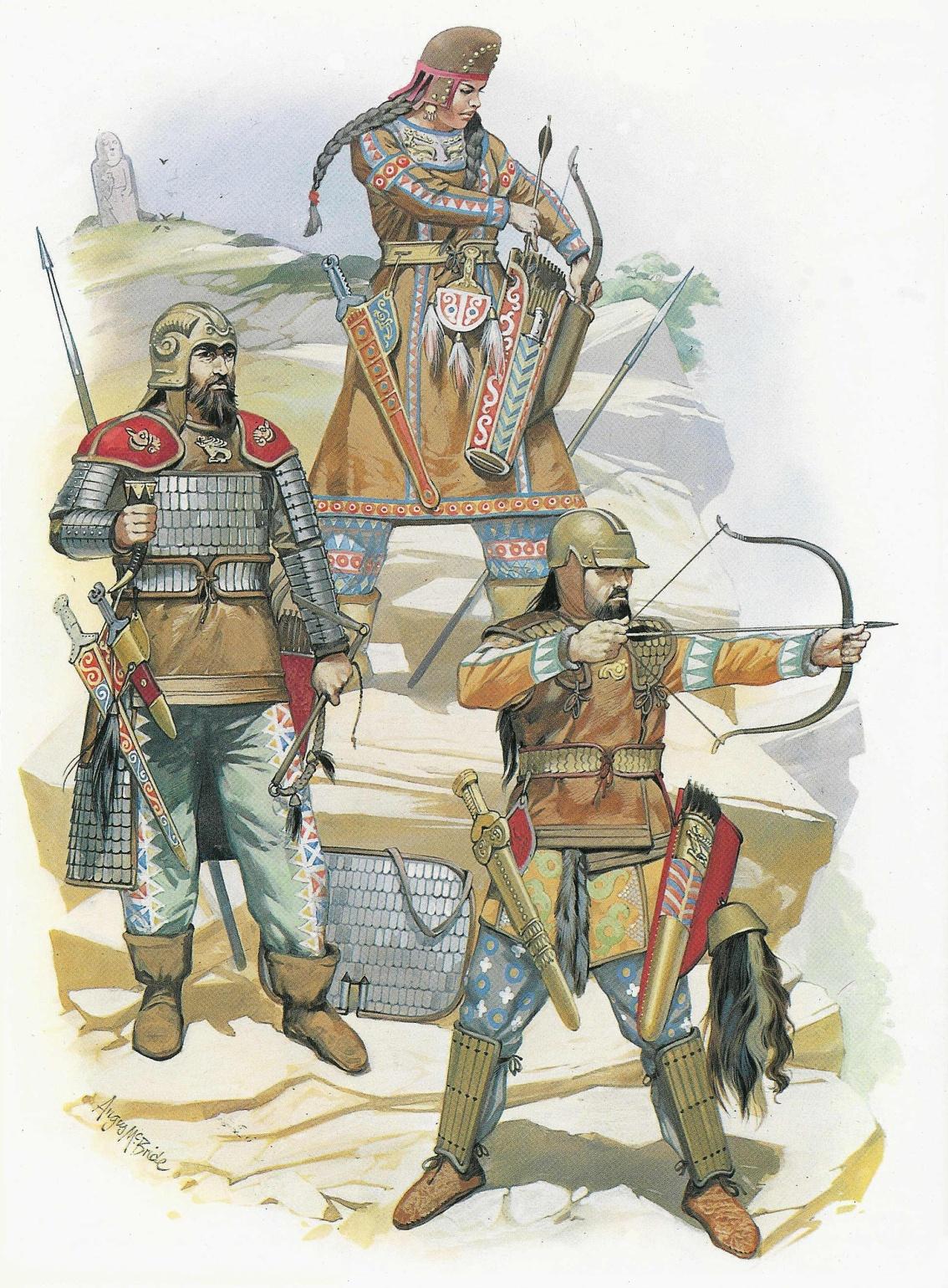I received the following e-mail from “Pedram” which aptly summarizes this segment of our discussion:
Have you seen the movie? I have heard that it was so insulting to Persian women…
The 300 movie certainly portrayed Iranian women as shallow, mindless “harem girl-objects”. This is even testified to in the trailer:
http://www.youtube.com/watch?v=bCwT0TF6fa4
The portrayal of Iranian women in this movie is not only grossly inaccurate in historical terms, but also degrading, insulting to women in general. Again, this seems to be derived from a massive sense of ignorance regarding the role of Iranian women in history.
The women of ancient Iran were priestesses (i.e. Temple of Anahita), warriors, leaders and guardians of learning. While a detailed discussion is beyond the scope of this article, a few highlights will hopefully serve to arouse the interest of the readers.
Roman sources are very clear in referring to women among the ranks of the Iranian cavalry in the Sassanian era:
“…in the Persian army … there are said to have been found women also, dressed and armed like men …”
[Zonaras (XII, 23, 595, 7-596, 9) in reference to forces of Shapur I]King Shapur receives the surrender of Emperor Valerian at Barbalissos. Female Iranian cavalry officer (left), nobleman of the Suren clan (with tall “beaked” hat), Emperor Valerian (kneeling), Roman Senator (man with toga) and King Shapur I (right) (Farrokh,(Farrokh, Elite Sassanian Cavalry-اسواران ساسانی-, Plate A, 2005; Paintings by Angus McBride).
Iranian women organized resistance against the Arabian invaders of the Ummayad and later Abbassid caliphates after the fall of Sassanian Iran (or Persia) in the 7th century AD. Key figures include Apranik, the daughter of General Piran, as well as Azadeh, guerilla resistance leader of Gilan-Mazandaran in northern Iran, and Banu, the wife of the anti-Abassid rebel Babak Khurramdin who led a decades long anti-Caliphate movement from Iranian Azerbaijan ( see Farrokh, Shadows in the Desert: Ancient Persia at War-Персы: Армия великих царей-سایههای صحرا-, 2007, Chapters 4-5).
A reconstruction by Cernenko and Gorelik of the north-Iranian Saka or Scythians in battle (Cernenko & Gorelik, 1989, Plate F). The ancient Iranians (those in ancient Persia and the ones in ancient Eastern Europe) often had women warriors and chieftains, a practice not unlike those of the contemporary ancient Celts in ancient Central and Western Europe. What is also notbale is the costume of the Iranian female warrior – this type of dress continues to appear in parts of Luristan in Western Iran. it is clear that Dr. Fox has simply invented his own interpretation of Iranian female dress of the ancient eras.
Iranian women continued to play leadership roles well after the fall of Sassanian Iran (or Persia) to the Islamic invaders of Arabia in the 7th century AD. One example is the governess of Rayy, birthplace of the medical savant Rhazes (near modern Tehran):
Figure cited by locals as Governess of Rayy, but now beleived to be a portrayal of Bini Shahrbanu (Farrokh, Elite Sassanian Cavalry-اسواران ساسانی-, 2005, p.60, 2005).
The equality of women with men in enshrined in the Zoroastrian religion itself. One the Zoroastrian fables refers to a conversation between Zoroaster and his daughter Freyne highlighting the fact that it is up to women to choose their mates for courtship and marriage.
Iranian women from Malayer (near Hamedan in the northwest) engaged in target practice in the Malayer city limits in the late 1950s. The association between weapons and women is nothing new in Iran; Roman references for example note of Iranian women armed as regular troops in the armies of the Sassanians (224-651 AD). Western media and Eurocentrist academics have worked hard to block such images from appearing in mainstream Western culture (Picture courtesy of Shahyar Mahabadi).
Chapters:
- The Notion of Democracy and Human Rights
- What really led to War
- The Military Conflict: Separating Fact from Fiction
- The Error of Xerxes: The Burning of Athens
- The “West” battling against the “Mysticism” of “the East”
- The Portrayal of Iranians and Greeks
- A Note on the Iranian Women in Antiquity
- “Good” versus “Evil”
- Bibliography





